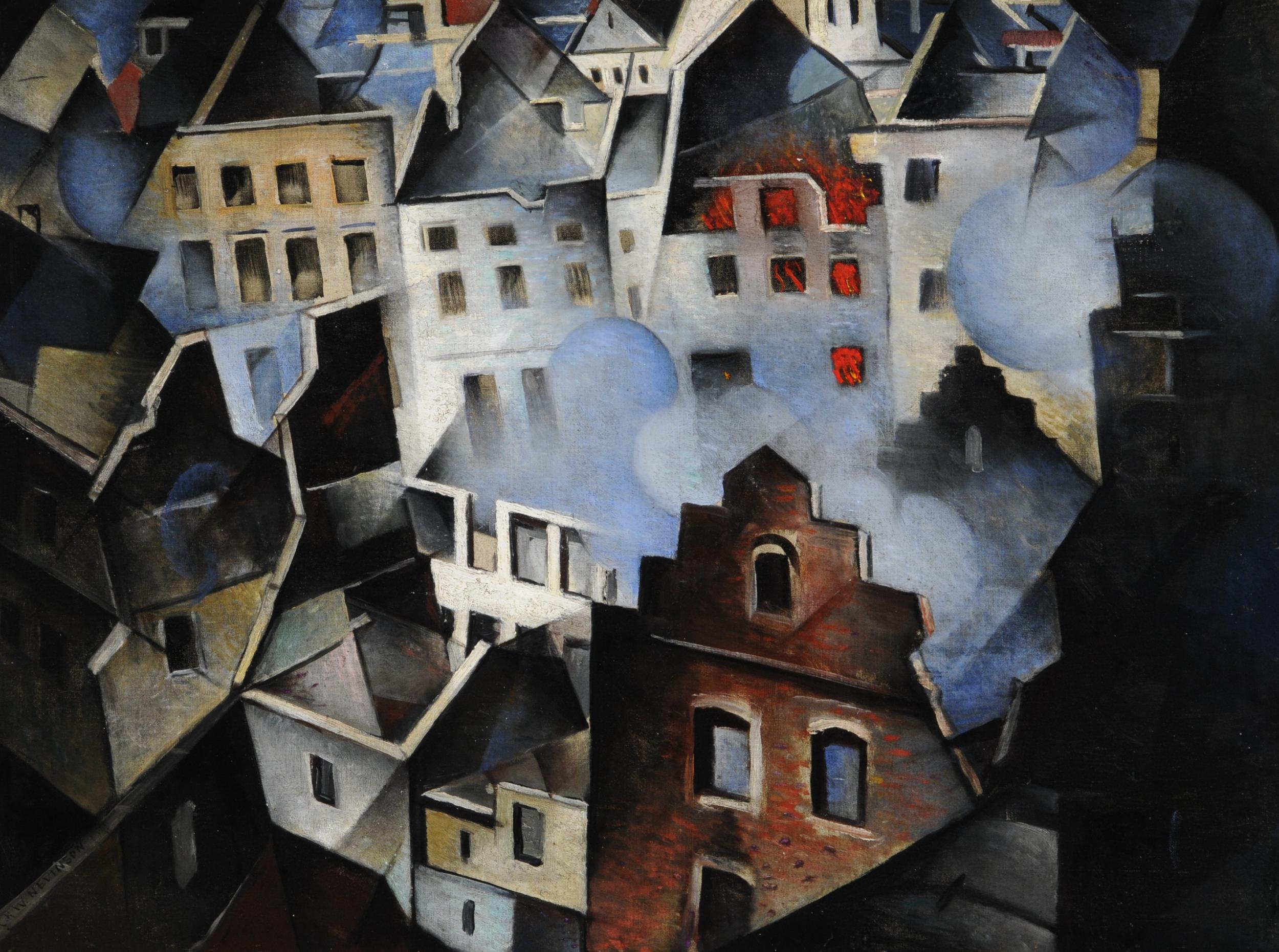Aftermath: Art in the Wake of World War One, Tate Britain, London, review: How art bore witness
This exhibition reveals how many of the most vivid acts of remembering through art came some years after the war

The question asked is this: what kind of art, whether English, French or German, could be regarded as the legacy of the Great War of 1914-1918, the bloodiest and most foolish conflict in the history of the world? Ten million was the death toll.
Art was one of its (almost) unsparing witnesses, of course, and this exhibition begins on the devastated battlefields – benign pastoral scenes reduced to heaving ructions of mud, and smoky, blackened stumps once officially known as trees.
What surprises, so often, is how relatively bloodless much of this seems. Nature may have taken the greater hit. Could that really be true? Of course not. The images on our own screens these days are much less censored than those official war artists. Never more than two dead to be photographed together was the rule handed down from above. We can only be permitted to agonise over, and reflect upon, the grotesque follies of Earl Haig to a degree.
Much more troubling is the great, rearing Rock Drill torso by Jacob Epstein (1913) – part menacing mechanised bird, part helmeted human head – which is a perfect, symbolic image of the dehumanisation of conflict.
Scenes witnessed from above of wholesale architectural ruination are remarkable too: Michelin’s published guides to the shattered towns and villages of France, for example, in which we see the skeletal hulks of cathedrals with their windows blown out. This is pocket voyeurism for the prosperous, weepy tourist. Or a remarkable film – shot by Lucien le Saint in 1919 from a small, wheeling plane – of Ypres in ruins.
The contemporary documentation in vitrines drags in issues of status and class – the scenes of Victory Day in Paris in 1919, with the disabled heroes much to the fore. The English kept them corralled and out of official sightlines.
The truly terrible acts of remembering through art – the work which arrests and horrifies even now, when we have become blithely inured to so much – often came some years later. Agony needs time to germinate in the dark perhaps.
An entire room is devoted to sequences of prints by Otto Dix, George Grosz and Georges Rouault. Two Germans and one Frenchmen. Wormy skulls. The thickened, lolling tongue of the dead man. Or Kathe Kollwitz’s stark preparatory drawing of two mourning parents robbed of their precious child – just as she had been robbed of hers. Here are the poisonous traces of war as registered in the 1920s by dada and surrealism. My task, declared the collagist Kurt Schwitters, is to make new things from the fragments of a shattered culture.
The final rooms dribble the theme away somewhat, or disperse it into more general views of what came after. New architecture swoops skyward. Soho's sexy leerers jitterbug to jazz. The more pleasurable distractions of constructing a different world from the ruins of the old come between.
Until 23 September (tate.org.uk)
Subscribe to Independent Premium to bookmark this article
Want to bookmark your favourite articles and stories to read or reference later? Start your Independent Premium subscription today.

Join our commenting forum
Join thought-provoking conversations, follow other Independent readers and see their replies